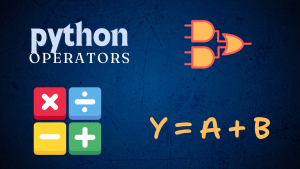The int() function in Python is a powerful tool for converting data into integers, a fundamental data type in programming. It's versatile, allowing you to transform strings, floats, and even booleans into integers. Let's dive into the details of using the int() function effectively.
Understanding the int() Function
The int() function is a built-in function in Python that takes an object as input and attempts to convert it into an integer. If successful, it returns the integer value; otherwise, it raises a TypeError.
Syntax and Parameters
The general syntax for the int() function is:
int(x, base=10)
- x: The object you want to convert to an integer. This can be a string, a float, a boolean, or even another integer.
- base (optional): The base of the number system to use when converting the input. This is useful when working with numbers in different bases like binary (base 2), octal (base 8), or hexadecimal (base 16). The default value is 10, representing the decimal number system.
Return Value
The int() function returns an integer value if the conversion is successful. If the input cannot be converted into an integer, it raises a TypeError.
Common Use Cases and Examples
Let's explore some common scenarios where the int() function proves invaluable:
Converting Strings to Integers
# Example 1: Converting a string containing an integer
string_number = "123"
integer_value = int(string_number)
print(integer_value) # Output: 123
# Example 2: Converting a string with leading zeros
string_number = "007"
integer_value = int(string_number)
print(integer_value) # Output: 7
Converting Floats to Integers
The int() function truncates the decimal part of a float when converting it to an integer.
# Example 1: Converting a float with a decimal
float_number = 3.14
integer_value = int(float_number)
print(integer_value) # Output: 3
# Example 2: Converting a negative float
float_number = -2.5
integer_value = int(float_number)
print(integer_value) # Output: -2
Converting Booleans to Integers
# Example 1: Converting True to an integer
boolean_value = True
integer_value = int(boolean_value)
print(integer_value) # Output: 1
# Example 2: Converting False to an integer
boolean_value = False
integer_value = int(boolean_value)
print(integer_value) # Output: 0
Converting Numbers in Different Bases
The base parameter comes into play when dealing with numbers in bases other than decimal (base 10).
# Example 1: Converting a binary number to decimal
binary_number = "1011"
decimal_value = int(binary_number, base=2)
print(decimal_value) # Output: 11
# Example 2: Converting a hexadecimal number to decimal
hex_number = "A2"
decimal_value = int(hex_number, base=16)
print(decimal_value) # Output: 162
Potential Pitfalls
- Invalid Input: If you try to convert an object that cannot be interpreted as an integer, a
TypeErrorwill be raised.
invalid_string = "abc"
try:
integer_value = int(invalid_string)
except TypeError:
print("Invalid input. Cannot convert to integer.")
- Base Mismatch: Using an incorrect base value when converting a number can lead to unexpected results.
# Attempting to convert a binary number with an incorrect base
binary_number = "1011"
decimal_value = int(binary_number, base=10) # Incorrect base
print(decimal_value) # Output: 1011 (not the correct decimal value)
Performance Considerations
The int() function is generally very efficient and performs its conversion quickly.
Interesting Fact
The int() function is one of the core building blocks of Python's numerical system. It underpins various mathematical operations and data conversions.
Conclusion
The int() function in Python is an essential tool for working with integers. Its ability to convert various data types into integers makes it highly valuable in various programming tasks. Remember to be mindful of potential pitfalls and to leverage the base parameter when working with numbers in different bases. This guide provides a solid foundation for understanding and using the int() function effectively.

